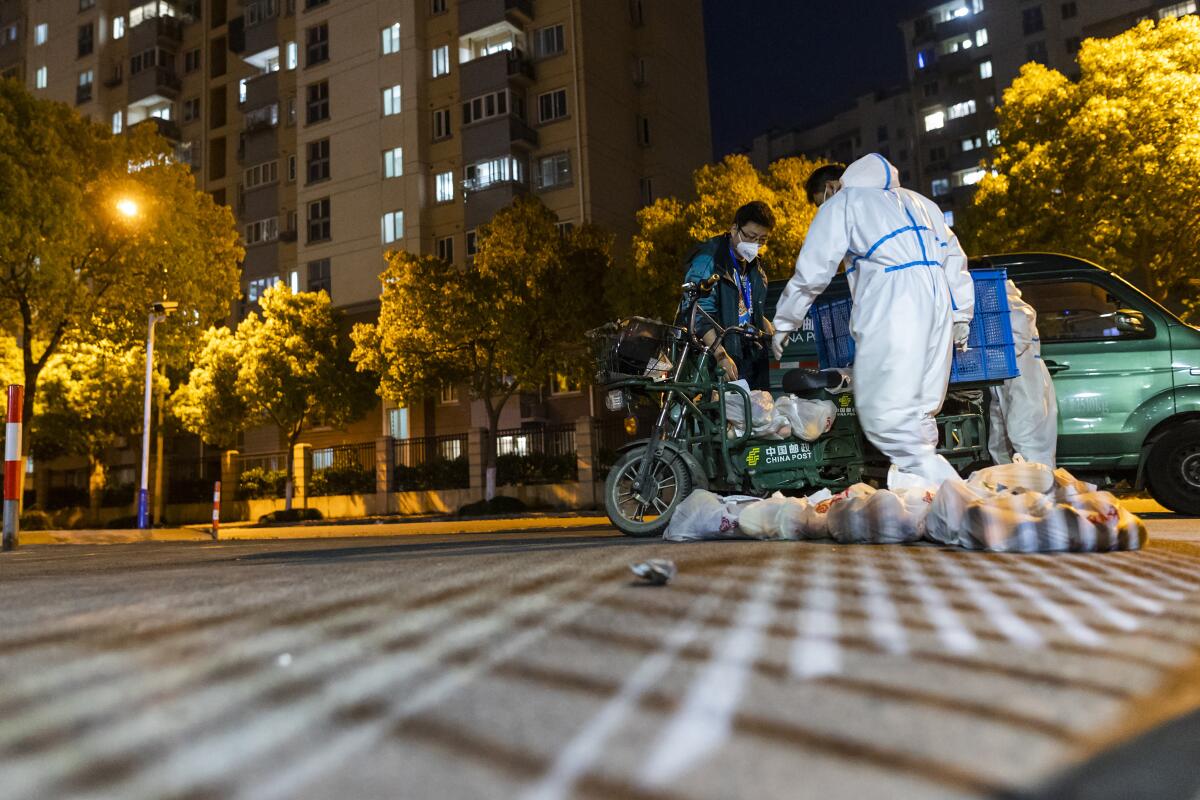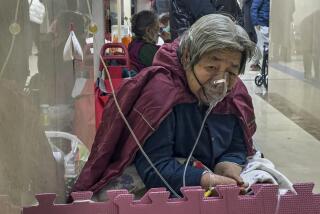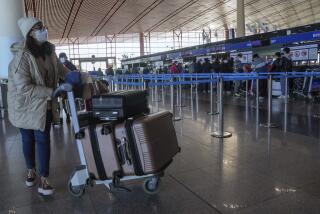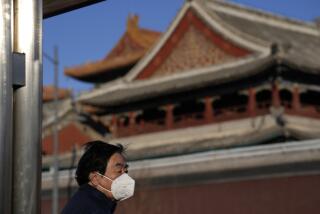Op-Ed: Millions are locked down in Shanghai because of ‘zero COVID’ protocols. Something needs to change

SHANGHAI — In January 2020, as the normally joyous Chinese Lunar New Year arrived, things looked bleak in Shanghai. COVID-19, then a complete unknown, was spreading. The government had shut down all but essential businesses, grocery store shelves were empty and the city’s streets were deserted.
But China’s response — prolonged self-isolation, mask wearing, infrared temperature checks and location-tracking smartphone QR codes — actually worked. It won the authorities time to study the virus, develop treatments and eventually create and administer a safe vaccine. Some three months later, as much of the rest of the world locked down, it felt as if our COVID battle had ended in victory.
This February China opened its doors to athletes from 90 nations for the Olympics, despite Omicron cases popping up. Prevention efforts at the Games were seen as successful. For almost two years the country’s safety protocols kept its residents from experiencing the kinds of large COVID outbreaks seen elsewhere.
Until they didn’t.
Here in Shanghai, the surge started with a handful of Omicron outbreaks in early March. People began bringing sleeping bags to work because they could end up stuck inside for mandated 48-hour testing periods. Then neighborhoods were locked down to control the spread. Finally, municipal authorities launched the still-ongoing citywide lockdown, which began on the eastern side of the city on March 28.
As Shanghai’s near-daily mandatory testing expanded, people’s fear became palpable. They weren’t scared of the virus — the high numbers of asymptomatic cases meant few seemed to get physically sick. The dread was over the government’s “zero COVID” policy, which is implemented by placing anyone who tests positive, regardless of their condition, in centralized quarantine facilities until they are determined to be COVID-free.
Pet owners scrambled to make contingency plans for their dogs and cats after images emerged of one person’s corgi being killed by a worker in protective gear after its owner was sent into quarantine. Before the government changed the policy that separated COVID-positive children from their negative-testing parents, some families developed a tactic of their household using a single toothbrush to share germs, to prevent being split apart. On social media, locals shared videos of various residents crying out in anguish over the lockdowns, demanding food, calling for “freedom.”
My friend Caroline was one of the lucky asymptomatic cases — she was placed in one of the 7,000 beds at the convention center. With no showers or proper bathrooms, and quality sleep impossible due to its echo-chamber acoustics, bright lighting and frosty temperatures, the facility is a great place … to get sick.
But her accommodations were five-star next to another expat I know who was dumped at the door of an overwhelmed hospital and told to sleep outside. Another acquaintance was left at an unfinished quarantine site for asymptomatic people. It was strewn with refuse and she was tasked with finishing her own space within the site.
The majority of us are leading surreal lives, prisoners in our own homes. We awaken at 5:59 and jam our thumbs on the grocery delivery app Meituan trying to place orders before the day’s offerings disappear. Unable to find basic provisions, we spend our mornings awaiting sporadic handouts of frozen meats and vegetables. Or we resort to online buying cooperatives, soliciting essential drinking water or splurging on $26 watermelons from those individuals who somehow manage to acquire passes that allow them out of lockdown. We spend our evenings checking the startlingly accurate COVID Distribution Map app, watching the red dots that indicate positive cases proliferate around us.
And yet, as the case numbers continue outpacing the government’s ability to cope, authorities double down on the empty promise of “zero COVID.” It’s like watching a roshambo player who, attempting to repeat a one-time triumph of beating scissors with rock, loses the new game because he never took the time to reassess his enemy, to see that it had become paper.
A paper tiger, in fact, given that BA 2 seems to be much more contagious than its predecessor, but far less virulent. Currently close to 97% of Shanghai’s more than 200,000 cases have been classified as asymptomatic. Among the sick, officially, there have been seven COVID fatalities since the current outbreak began.
There are countless other victims of China’s “zero COVID” policy though. We see them on the social networks Weibo or WeChat before the censors can delete them. Firefighters unable to reach a burning building that was fenced off during the lockdown. A man suffering a deadly asthma attack being denied help from an ambulance driver. A woman wailing in grief next to her dead mother, whom she wasn’t allowed to take to a clinic for kidney dialysis. Such is the fate of those trapped behind building doors that are padlocked or even welded shut.
This weekend, I watched a video of a pregnant woman getting accosted by a crowd of local security guards. It shows her being shoved and yelled at by a man wearing a Chinese Communist Party armband. Her crime was being six months pregnant and slipping lockdown to visit her obstetrician.
On Tuesday some residents were allowed to leave lockdown, though it’s unclear how many, or when more restrictions may ease.
When the pandemic began, “zero COVID” felt appropriate, it was our victorious battle plan. Now it is doing more harm than good. It’s time for China to take a cue from the virus and adapt.
Liam Gowing teaches English in Shanghai.
More to Read
A cure for the common opinion
Get thought-provoking perspectives with our weekly newsletter.
You may occasionally receive promotional content from the Los Angeles Times.










